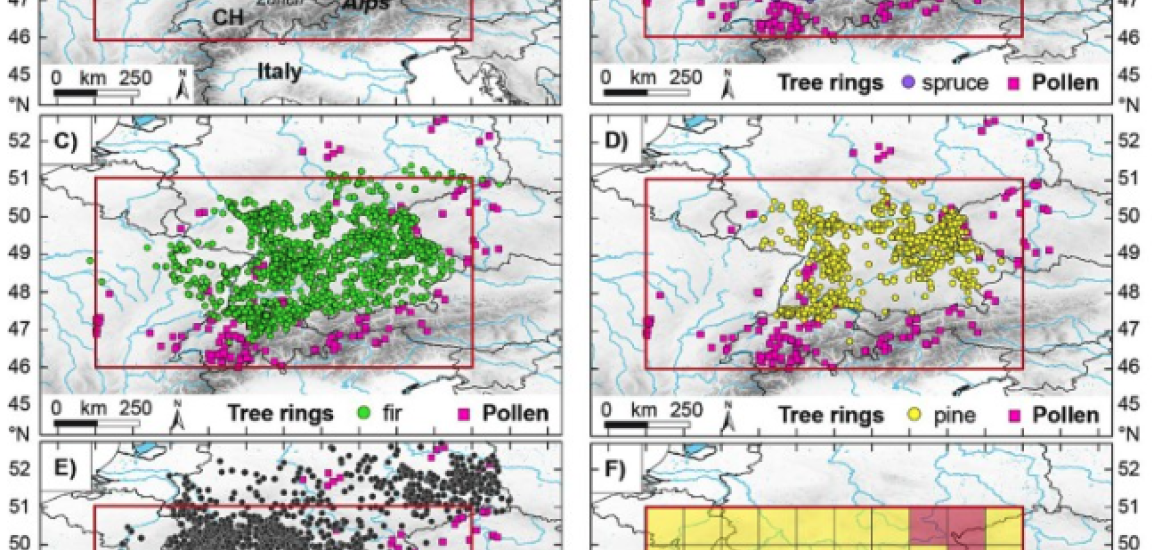- Home
- All News Overview
- Legacy of Last Millennium Timber Use On Plant Cover In Central Europe: Insights From Tree Rings and Pollen

Tuesday, 25 June, 2024
Members of the DiverseK (Integrating diverse knowledge systems for environmental policy) working group have published a new article in Science of The Total Environment.
Antoine E et al. have published a paper on "Legacy of last millennium timber use on plant cover in Central Europe: Insights from tree rings and pollen" in Science of The Total Environment which looks at how the use of timber and wood by humans in, for example, construction, tool production or as an energy source could have had an impact on vegetation, forest management, landscape heterogeneity and palynological diversity.
The authors found that forest cover decreased in the studied area continually throughout the last millenium. The authors conclude that "Growing human populations had impacts on the transformation of former woodlands to pasture and arable land, especially from the mid-17th century, a period, when the modern landscapes were formed, resulting in a decline in palynological diversity as seen in present-day even-aged monocultures that add little environmental value to landscapes in Central Europe. In this paper, we were able, for the first time, to quantify the anthropogenic impact on forest ecosystems of Central Europe during the last millennium and demonstrate the gradual development of woodland transformation into cultural landscapes."
> Access the article
> Find out more about the DiverseK working group
AS acknowledges support from the German Research Foundation (DFG, SE 2802/1-1) and the Swedish Research Council (Vetenskapsrådet, grant no. 2018-01272). This research contributes to the DiverseK (PAGES Working Group) initiative.